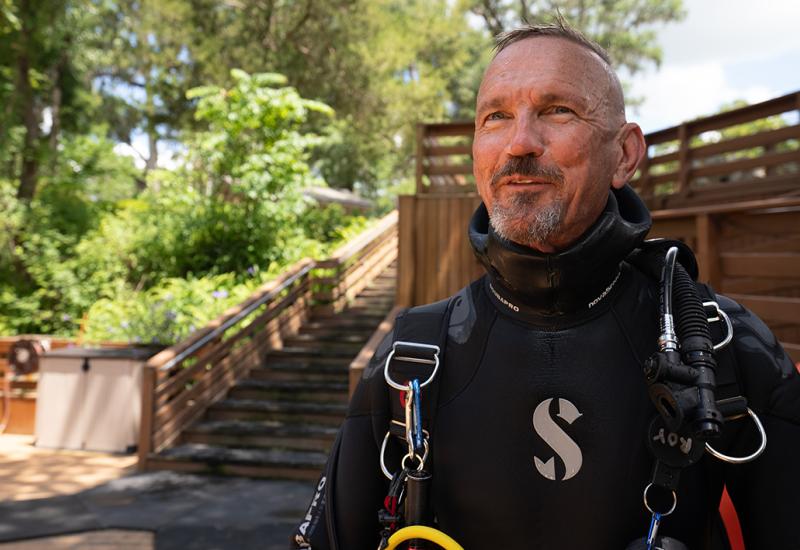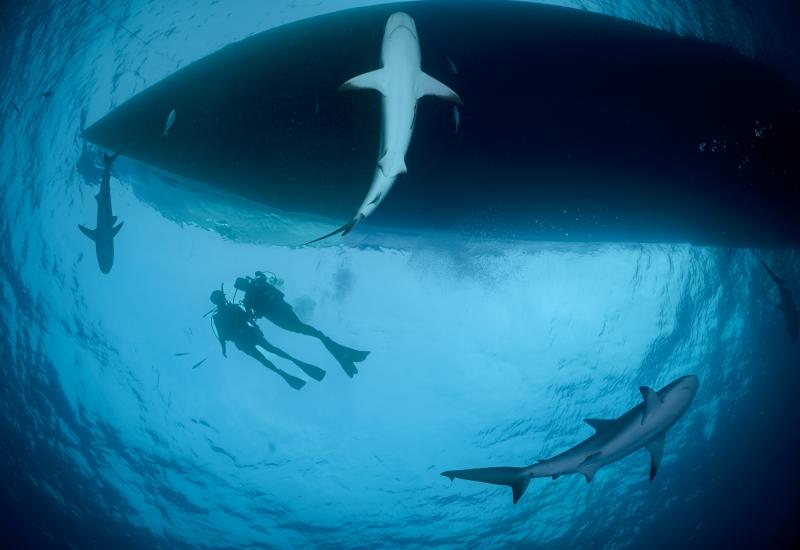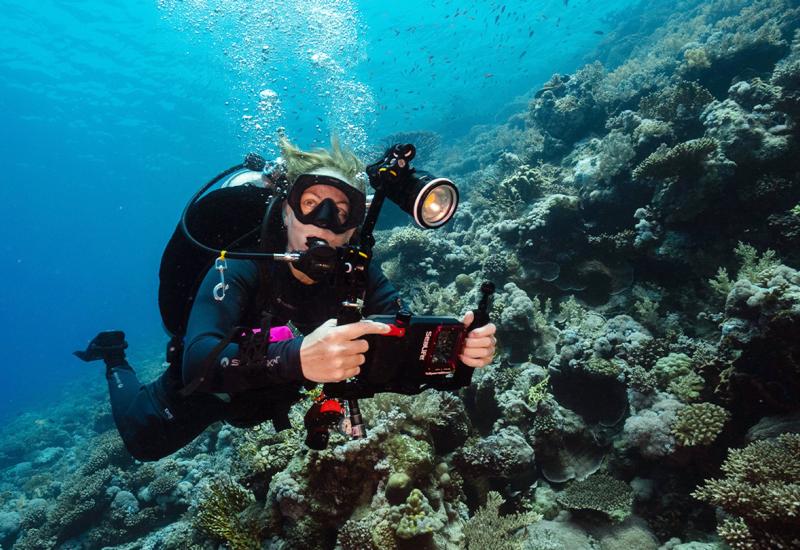ScubaLab: Mask Tests 2011
ScubaLab: How We Test Dive Masks
Photo by Jon Whittle
Graphic by Lane DuPont
To see the individual reviews of each of the different masks, click on the appropriate page in "Related Articles" at the bottom of this page.
We’ve divided this review by mask type: single-window or dual-window. Six of the masks are a single-lens design and 11 are a dual-lens design. The following article provides the parameters, methods and results of each of the mask tests.
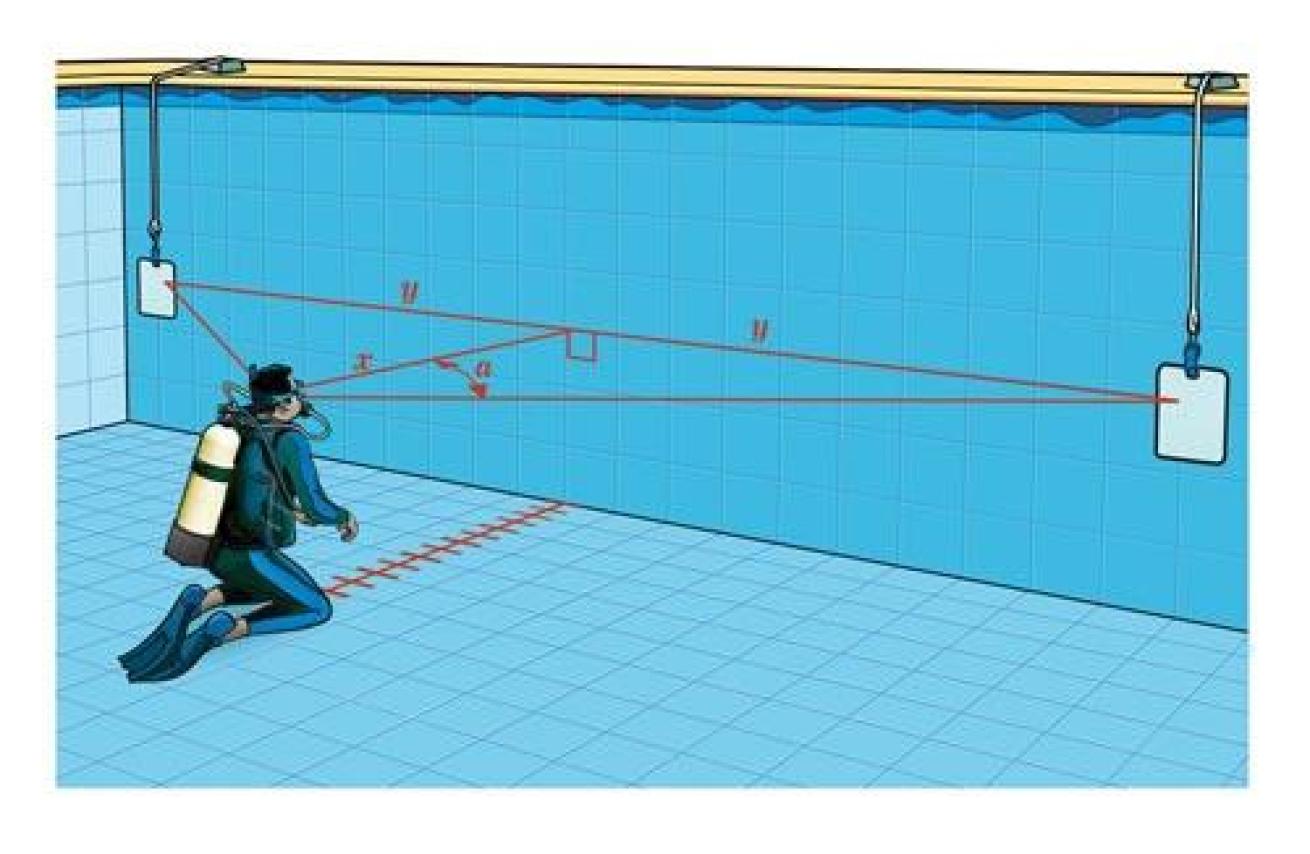
THE TESTING
For this roundup, ScubaLab testers used Field of View (FOV) testing — in a pool and in the lab — to determine viewing qualities of the masks. We did the horizontal-view tests both in the water and out. On a 20-foot-wide wall, two weights were suspended equal distance from a center target point at eye level. Kneeling on the pool bottom, test divers moved forward until both side objects disappeared from peripheral view. A tape along the pool bottom measured that distance from the wall, which was then recorded. We then took the measurements from the front of the diver to the wall and from two distances away from the wall (one near, one far), and we used a formula to derive the results. This test was repeated in the lab, where measurements for upward and downward view were taken in the lab only, but the same formula was used.
Click here to see the results of the Field of View Tests
Lab Tests
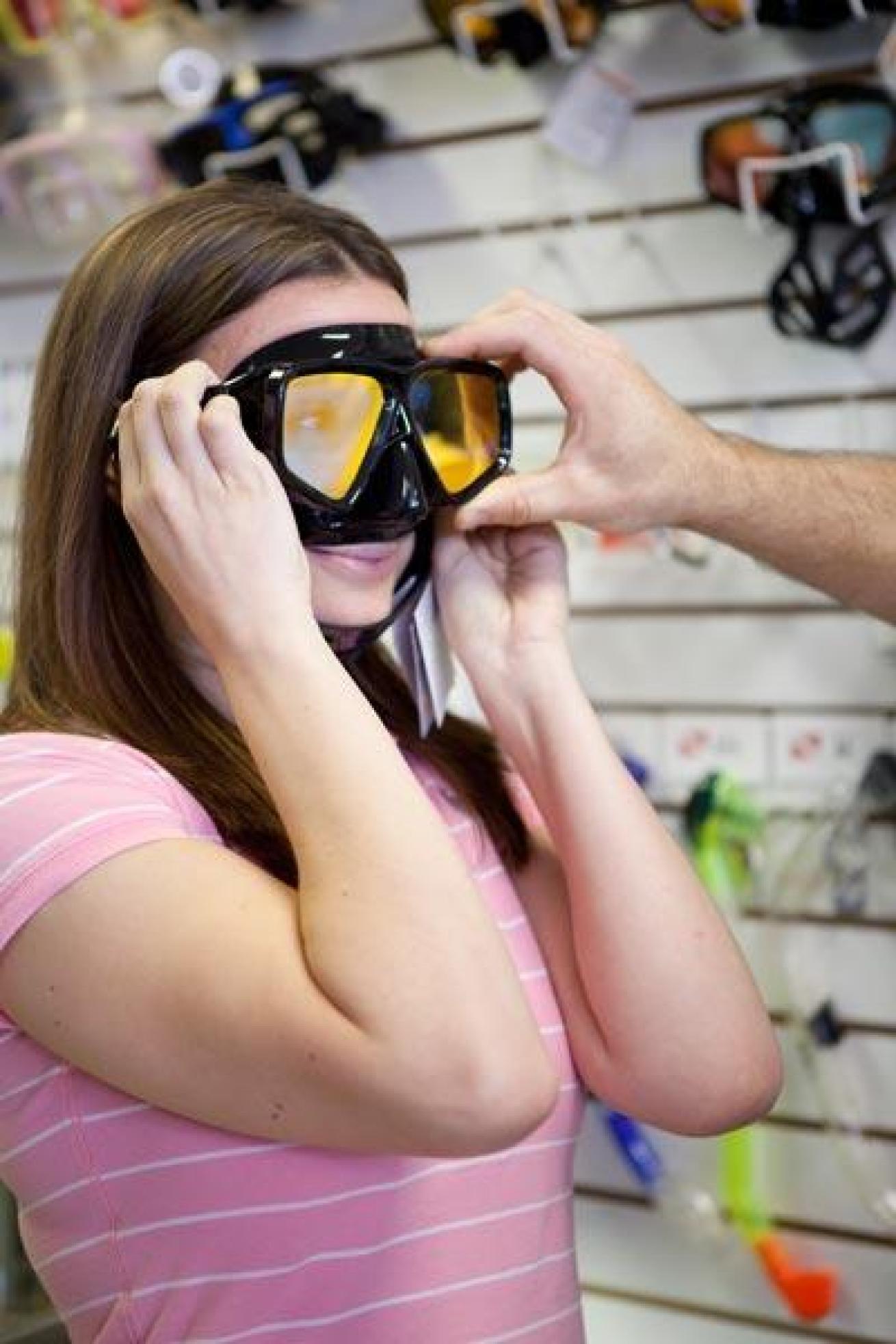
Fit: Most manufacturers offer models for small, medium and large faces. We noted the size for most masks.
Mask Skirt: Comfort is key in fitting a mask: The skirt must conform to the shape of your face. A skirt that’s too big for your face will leak, and a tightly fitting mask will hurt, and could lead to a mask squeeze because you can’t equalize properly.
Lens Type and Placement: How close the lens sits to your eyes determines whether the mask is low-volume (easier to clear and offering good sideways vision) or high-volume (good for divers with large faces).
Nose Pocket: Underwater, the nose pocket helps to protect your nose, prevent fogging and make it easy to equalize.
Buckle and Strap Adjustment: It should be easy to adjust your mask on the surface and underwater.
Comfort of the Strap: A split strap increases comfort, though divers often replace the silicone ones with a softer fabric one.
Corrective Lenses: If you wear glasses or contact lenses, you’ll need a mask that includes your prescription in the lens.
To see a breakdown of the different features for each mask, go to Mask Features
Ergonomic Tests
Testers took the masks for a series of dives to see how each one worked in real-world conditions. Testers evaluated the following:
Ease of Equalizing: In particular, how did the nose pocket perform?
Underwater Vision: In general, how did a mask’s upward, downward and sideways viewing compare with the FOV test?
Ease of Clearing: We flooded each mask to test how easy it is to clear and get a good seal again.
For tips on how to get a good mask fit, read "How to Find A Mask that Fits." For an explaination of how the different mask features work, read "If the Mask Fits." Links to both articles can be found in the "Related Articles" at the bottom of this page.
MEET THE TESTERS
Floyd Devine PADI Instructor Floyd Devine has managed three retail dive operations, is a graduate of the United States Naval Academy and a career naval aviator. Devine was the mask test team supervisor.
Paul Shepherd A 10-year PADI Instructor and the former managing director of Zanzibar’s Rising Sun Dive Center, Shepherd now lives in Florida.
Brooke Morton A veteran gear tester and contributor to Scuba Diving, Morton has been diving for 18 years and is a PADI Open Water Instructor.
Katy Danca Galli A NAUI-certified Master Diver, Danca Galli has been diving for eight years. She is the assistant photo editor of Scuba Diving.

